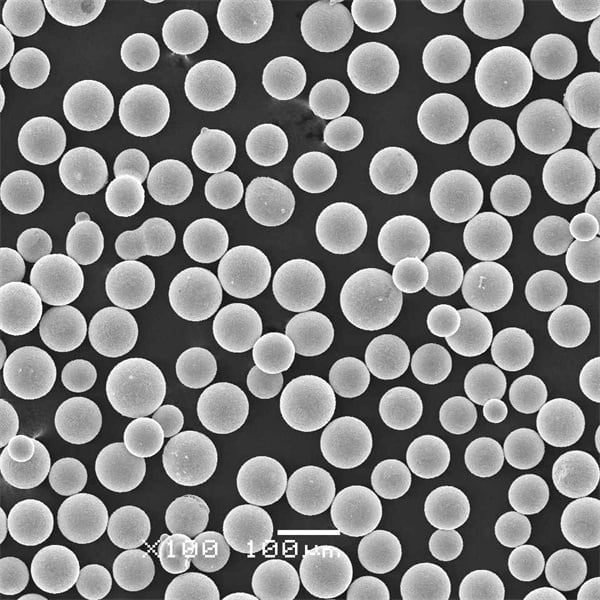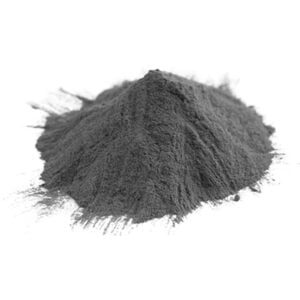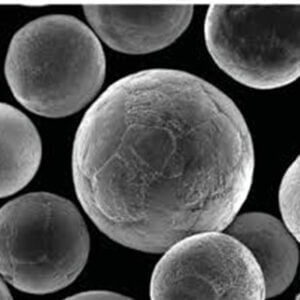Nickel Silver Powder
Nickel silver powder refers to a special type of metal powder made from a copper alloy that contains nickel and often zinc. It gets its name from its silvery appearance, which resembles sterling silver. However, it contains no elemental silver. Nickel silver powder has become an important material across several industries due to its properties and applications.
Low MOQ
Provide low minimum order quantity to meet different needs.
OEM & ODM
Provide customized products and design services to meet unique customer needs.
Adequate Stock
Ensure fast order processing and provide reliable and efficient service.
Customer Satisfaction
Provide high quality products with customer satisfaction at the core.
share this product
Table of Contents
Nickel silver powder refers to a special type of metal powder made from a copper alloy that contains nickel and often zinc. It gets its name from its silvery appearance, which resembles sterling silver. However, it contains no elemental silver. Nickel silver powder has become an important material across several industries due to its properties and applications.
Overview of Nickel Silver Powder
Nickel silver powder is composed of a copper-nickel-zinc alloy with varying percentages of each metal. The basic material specifications are:
Table 1: Composition of Nickel Silver Powder
| Component | Percentage Range |
|---|---|
| Copper (Cu) | 50-70% |
| Nickel (Ni) | 10-30% |
| Zinc (Zn) | 5-20% |
Nickel silver can sometimes contain small amounts of lead or tin as well. But copper and zinc make up the majority.
Some of the essential properties and characteristics of nickel silver powder include:
Table 2: Properties of Nickel Silver Powder
| Property | Description |
|---|---|
| Color | Silver-white to pale yellow |
| Luster | Bright metallic sheen |
| Melting Point | 1640-1750°F (893-955°C) |
| Specific Gravity | 8.3-8.8 |
| Mohs Hardness | 3.5-4.5 |
| Thermal Conductivity | 0.04-0.09 W/cm-K |
Nickel silver powder offers high ductility, corrosion resistance, mechanical strength and hardness, and antimicrobial qualities. It can be easily mixed with other metal powders as an alloying additive.
Table 3: Advantages of Nickel Silver Powder
- Ductile and malleable
- High impact strength
- Good corrosion resistance
- Antimicrobial properties
- Tarnish resistant surface
- Excellent polishability
- Can be plated with metals like gold, silver etc.
- Easy to alloy with other powders
Table 4: Limitations of Nickel Silver Powder
- Expensive compared to brass or bronze
- Lower electrical conductivity than copper
- Prone to dezincification corrosion if zinc level is too high
Nickel silver powder is available in various sizes, shapes, and formulations to suit different manufacturing techniques and applications across industries.
Types of Nickel Silver Powder
There are several standard classifications and specifications of nickel silver powder based on composition, particle size, morphology, manufacturing process etc.
Table 5: Types of Nickel Silver Powder
| Type | Description |
|---|---|
| By Composition | CuNi18Zn20, CuNi12Zn24 etc. based on percentage of metals |
| By Particle Shape | Spherical, irregular, flattened, dendritic and more |
| By Size | Range from 1 micron to 100s of microns |
| By Production Method | Atomized, carbonyl, electrolytic, spherical etc. |
| By Additives | With lubricants, flow agents, antioxidants etc. |
Particle Shape: Spherical and near-spherical powders have the best sintering properties and density in finished products. Irregular, flattened and dendritic particles provide higher green strength.
Particle Size: Finer atomized powders of 1-20 microns flow easily and sinter faster. Coarser powders over 150 microns have higher green strength. Ultrafine nano nickel silver powder is also produced.
Manufacturing Method: Common production techniques include gas atomization, electrolysis, carbonyl decomposition etc. which affect particle shape and size distribution.
Additives: Small amounts of graphite, stearates etc. are added to improve powder flow and lubrication during compaction.
The specific nickel silver powder specification must be chosen based on the fabrication process and application requirements of strength, precision, surface finish etc.
Production Methods for Nickel Silver Powder
Some prominent manufacturing techniques used to produce nickel silver alloy powder include:
Table 6: Nickel Silver Powder Production Methods
| Method | Description | Characteristics |
|---|---|---|
| Gas Atomization | Molten metal stream atomized by high-pressure gas jets into fine droplets | Spherical particles, good flow and packing, cleaner alloy |
| Water Atomization | Molten stream broken into droplets by high-speed water jet | Irregular shapes, wider size distribution |
| Electrolysis | Aqueous electrolytic process using metal anodes | Dendritic shape, very fine particles |
| Carbonyl | Thermal decomposition of metal carbonyl vapor | Spherical, ultrafine 1-5 micron powder |
Gas atomization with inert gas produces the most spherical nickel silver powder suitable for additive manufacturing applications. Water atomized and electrolytic powders have more irregular shapes but cost less.
Applications of Nickel Silver Powder
Nickel silver alloy powders have excellent mechanical properties and corrosion resistance which make them suitable across various application areas:
Table 7: Applications of Nickel Silver Powder
| Industry | Application | Reasons for Use |
|---|---|---|
| Powder Metallurgy | Automotive parts, household goods, hardware | Excellent strength, ductility, wear resistance |
| Additive Manufacturing | 3D printing of industrial, medical, consumer products | Good dimensional accuracy, fine details |
| Brazing | Joining of stainless steel, copper, ceramics, carbides | Matching expansion coefficients |
| Friction Materials | Brake pads, clutch discs | High temperature stability |
| Electronics | Conductive adhesives, coatings, pastes | High electrical conductivity |
| Cosmetics | Nail polish, lipstick, eyeshadow | Smooth application, adhesion, sheen |
Powder Metallurgy (PM) is the largest application area covering automotive engine and transmission components, hardware, gears, magnets etc. Nickel silver powder is compacted and sintered using PM technology due to its superb mechanical properties.
Additive Manufacturing utilizes nickel silver powder in laser powder bed fusion, binder jetting and metal extrusion 3D printing processes for prototypes, tooling, and end-use parts across aerospace, medical, dental, jewelry etc. fields.
Brazing and Soldering pastes use nickel silver powders for joining stainless steels, bronzes, brasses, tungsten carbide cutting tools, and ceramic components.
Suppliers and Pricing of Nickel Silver Powder
Nickel silver alloy powders are sold by various specialty metal powder manufacturers, distributors and traders globally. Prices depend on exact composition, particle size distribution, shape, lot quantity and product purity.
Table 8: Nickel Silver Powder Suppliers
| Supplier | Brand Names | Location |
|---|---|---|
| Sandvik | Osprey, Hoganas | Europe, Americas |
| Rio Tinto | QMP | Canada, US |
| Kymera International | Makin | US, Singapore |
| SCM Metal | Feran | Italy |
| American Elements | AE | US |
Approximate price ranges:
- Carbonyl nickel silver powder: $50-100 per kg
- Atomized nickel silver powder: $20-60 per kg
- Electrolytic nickel silver powder: $10-30 per kg
High purity grades (>99.9%) cost 20-50% more than industrial grade powders (92-98% purity).
Table 9: Price Range of Nickel Silver Powders
| Type | Purity | Particle Size | Price Range |
|---|---|---|---|
| Carbonyl powder | 99.9% | 1-7 microns | $50-110 per kg |
| Gas atomized powder | 98%+ | 15-45 microns | $25-75 per kg |
| Irregular powder | 96-98% | 75-250 microns | $15-35 per kg |
Prices also depend on bulk quantity discounts from distributors and change based on raw material costs.
How to Choose the Right Nickel Silver Powder
Selecting the optimal nickel silver powder specification requires balancing composition, particle size and shape, impurity levels, manufacturing method, costs and availability based on production process compatibility and end-use application requirements of strength, wear resistance, conductivity etc.
Table 10: Nickel Silver Powder Selection Guidelines
| Parameter | Recommendations |
|---|---|
| Alloy Composition | Pick CuNi10Zn15 for cost, CuNi18Zn20 for strength and hardness, or custom alloys. Reduce Zn (<15%) to minimize dezincification issues. |
| Particle Size | Finer 1-20 micron size for sintering speed, over 150 micron for higher green strength. Multimodal distributions improve density. |
| Particle Shape | Prefer spherical shape (from gas atomization) for best fluidity and densification. Avoid coarse dendrites. |
| Purity | 99%+ purity needed for medical/dental applications, 96-98% works for industrial uses if properties permit. |
| Manufacturing Method | Gas atomized and carbonyl nickel |
Comparative Analysis of Nickel Silver Powder
Nickel silver alloy powders offer a unique combination of properties compared to other metal powders like copper, bronze, brass, and stainless steel.
Table 11: Comparison of Metal Powders with Nickel Silver Powder
| Parameter | Nickel Silver | Copper | Brass | Bronze | 316L Stainless Steel |
|---|---|---|---|---|---|
| Composition | Cu, Ni, Zn | Cu | Cu, Zn | Cu, Sn, Zn | Fe, Cr, Ni, Mo |
| Color | Silver-white | Copper | Gold to red | Gold to red | Gray metallic |
| Density | 8.7 g/cc | 8.9 g/cc | 8.5 g/cc | 8.8 g/cc | 8 g/cc |
| Strength | Excellent | Good | Good | Excellent | Higher |
| Hardness | Medium | Soft | Medium | Medium | Very high |
| Corrosion Resistance | High | Medium | Medium | Medium | Highest |
| Thermal Conductivity | 25% IACS | 100% IACS | 28% IACS | 60% IACS | 16% IACS |
| Electrical Conductivity | 10-15% IACS | 100% IACS | 28% IACS | 15-20% IACS | 1.5% IACS |
| Cost | High | Low | Low | Medium | High |
| Post-Processing | Easy | More difficult | Medium | Medium | Most difficult |
Strength: Nickel silver powder is almost as strong as bronze while being more ductile. Strength can be optimized through appropriate compositions.
Corrosion Resistance: Nickel silver alloys resist corrosion in water, moisture, acids etc. better than brass or copper powder. However, stainless steel powder has the best corrosion resistance.
Conductivity: Copper powder has the highest thermal and electrical conductivity followed by brass, bronze, and nickel silver in decreasing order. Stainless steel powder is not conductive.
Workability and Finish: Nickel silver powder can be easily machined, polished, soldered, brazed to achieve smooth shiny finishes comparable to silver. Stainless steel powder is the hardest to work with.
So whether the application calls for strength, corrosion protection, heat/electrical transfer, aesthetics, or affordability – nickel silver powder checks several boxes making it suitable across industries from automotive components to medical instruments.
Standards and Certifications for Nickel Silver Powder
Key standards applicable to various types and graders of nickel silver powder include:
Table 12: Standards for Nickel Silver Powder
| Standard | Description |
|---|---|
| ASTM B833 | Specification for nickel silver powder compositions, testing methods |
| ISO 4490 | Determination of particle size distribution using analytical sieving |
| ISO 24801 | Gas atomization of metal powders classification and technical delivery requirements |
| ASTM B215 | Standard practice for determining metal powder true density |
| ISO 14239 | Determination of fluidity by means of a vibrating feeder |
Reputable global nickel silver powder manufacturers and suppliers have quality management certifications like ISO 9001, ISO 14001, AS9100D, OHSAS 18001, and ISO 45001 to ensure consistency in chemical composition, particle characteristics, lot-to-lot uniformity and safety/environment norms compliance.
Application-specific certifications may also be required by customers for uses in medical, aerospace, automotive, and electronics sectors depending on regional regulations.
Safety Measures When Handling Nickel Silver Powder
Like any fine grained metal powder, certain health and safety precautions must be taken while handling, transporting, storing and processing nickel silver powder:
- Wear protective gear – masks, eyewear, filters, gloves – to minimize inhalation and skin contact
- Use spark-resistant tools to prevent ignition in pure oxygen environments
- Ensure proper ventilation and point-of-use dust extraction equipment
- Keep away from heat, sparks, flames as powder dusts may be combustible
- Wash thoroughly after working with powders
- Follow local environmental regulations for waste disposal
Packaging and Transportation: Nickel alloy powders are packed inert gas-purged bottles, cans, drums etc. or with moisture-absorbing bags as they can oxidize and degrade over time. Regulatory classifications depend on composition, particle size distribution and bulk density.
Storage: Keep powder containers tightly sealed and stored properly by trained personnel. Avoid inventory getting too old or caking of particles.
Following safety data sheet (SDS) guidelines and having emergency procedures for spillage, fire hazard, accidents helps mitigate associated health and environment risks when storing tens or hundreds of kilograms of nickel silver powder.
FAQs
Q. Does nickel silver powder contain any silver?
A. No. Despite its name, nickel silver or German silver contains no elemental silver. It gets its silver appearance from having a high copper content alloyed with nickel and zinc.
Q. Is nickel silver powder same as brass powder?
A. No. Brass powder is a copper-zinc alloy while nickel silver powder also contains 10-30% nickel in addition to copper and zinc. The nickel gives it better corrosion resistance compared to brass.
Q. Why is nickel silver strong and hardened?
A. Nickel forms a solid solution alloy with copper by replacing some of its atoms in the crystalline lattice structure. This distortion at the atomic-level provides strengthening and hardening effects which makes nickel silver stronger than pure copper.
Q. Does nickel silver powder oxidize or corrode?
A. Yes, it can oxidize slowly over time in air forming a protective oxide layer on the surface similar to copper oxidation. Acidic environments can induce corrosion attacks by preferentially dissolving metals. Proper storage with inert gas blanketing and humidity controls prevents oxidation.
Q. Can nickel silver powder be 3D printed?
A. Yes. Nickel silver alloy powders with controlled particle size and spherical morphology are highly suited for 3D printing using binder jetting, laser powder bed fusion, and fused deposition modeling technologies. Parts with fine details and thin walls can be easily fabricated.
Q. Are nickel silver powders antimicrobial?
A. Yes. Scientific studies have shown 99.9% reduction in bacteria when nickel silver powder is incorporated into plastics or coatings. The oligodynamic effect from its high copper content gives it effective antimicrobial properties against a wide spectrum of microbes.
Get Latest Price
About Met3DP
Product Category
HOT SALE
CONTACT US
Any questions? Send us message now! We’ll serve your request with a whole team after receiving your message.

Metal Powders for 3D Printing and Additive Manufacturing
COMPANY
PRODUCT
cONTACT INFO
- Qingdao City, Shandong, China
- [email protected]
- [email protected]
- +86 19116340731












